This portal is supported by the Arab Regional Support Group, which serves 19 Member States in the region and is committed to bringing together all UN and non-UN agencies and organizations, including from the Civil Society, higher education networks, research community, teachers’ unions or representations, etc., working on education development in the Arab region to coordinate and harmonize strategies and efforts. The heart of the Education 2030 agenda lies at the national level. Therefore, governments have the primary responsibility to deliver on the right to education and a central role as custodians of efficient, equitable and effective management and financing of public education.
The Group is comprised of UN Agencies and multilateral organizations, regional representatives of civil society organizations, regional organizations and the private sector. The membership is institution as opposed to individual in order to guarantee the continuity of participation and information exchange.
One of the Group’s key responsibility is to facilitate information sharing, communications and interaction with country teams of respective member organizations and informing the Group on pertinent developments, including national processes and challenges. This portal is therefore intended to support the Group in this task in order to assist Member States with sustained political leadership in education, which will guide the process of contextualizing and implementing the Education 2030 goals and targets, based on national experiences and priorities, and ensuring a transparent and inclusive process with other key partners.
The portal is managed by the Secretariat of the Group, through the UNESCO Regional Bureau for Education in Beirut.

FAQ
1. 2030 Agenda and SDG 4
-
What is the 2030 Agenda for Sustainable Development?
The 2030 Agenda for Sustainable Development is an inter-governmental commitment comprised of 17 aspirational goals that address shared development challenges at the global and local levels.
They result from what is arguably the most inclusive process of consultation in the history of the United Nations, reflecting substantive input from all sectors of society, all actors of the international community and all parts of the world.
All Member States, the entire UN system, experts and a cross-section of civil society, business and, most importantly, millions of people from all corners of the globe, have committed themselves to this comprehensive agenda seeking to address globally-shared concerns and to promote the common good.

-
What are the underlying principles?
- Education is a fundamental human right and an enabling right. To fulfil this right, countries must ensure universal equal access to inclusive and equitable quality education and learning, leaving no one behind. Education shall aim at the full development of the human personality and promote mutual understanding, tolerance, friendship and peace.
- Education is a public good. The state is the main duty-bearer in protecting, respecting, and fulfilling the right to education. As a shared societal endeavour, education implies an inclusive process of public policy formulation and implementation . Civil society, teachers and educators, the private sector, communities, families, youth and children all have important roles in realizing the right to quality education. The role of the state is essential in setting and regulating standards and norms.
- Gender equality is inextricably linked to the right to education for all. Achieving gender equality requires a rights-based approach that ensures that girls and boys, women and men not only gain access to and complete education cycles, but are empowered equally in and through education.
-
How does SDG4 differ from the MDGs and from EFA?
As a global education agenda, SDG4 differs from both the education-related MDGs and from EFA in scope, geographical coverage and policy focus. Table 1 below highlights some of these differences.
- Scope: While MDG2 was focused on children and primary education, EFA had a broader agenda aimed at ‘meeting the basic learning needs of children, youth and adults’. As we know, the EFA commitment to ensure the right to basic education for all was not achieved by the deadline set for 2015. SDG4 therefore pursues this unfinished basic education agenda, but also goes beyond, committing all countries to ensure equal opportunity in access to post-basic learning opportunities in a lifelong perspective.
- Geographical coverage: With its narrower scope on ensuring children’s access to, and completion of primary education, the geographical coverage of the MDGs was focused on low-income and conflict-affected countries in the South. This was not the case for EFA. While originally intended as a universal agenda to ensure quality basic education for all in all countries across the world, in practice, EFA became focused on countries where the proportion of children out-of-school was the greatest. SDG4, on the other hand, is, by definition a universal agenda applicable to all countries both in the global North, as well as the global South.
- Policy focus: From the narrower MDG focus on access to, and completion of, primary education, EFA was concerned with access to quality basic education for all children, youth and adults. The SDG4 continues the EFA focus on quality basic education for all and broadens the agenda further to include concern for equitable access to post-basic education and training for youth and adult. What is also new to the SDG4 is the focus on the relevance of learning outcomes both for the world of work, as well as for citizenship in a global and interconnected world.
Global education agendas compared: MDG2, EFA and SDG4 MDG2 EFA SDG4 Scope Primary Education
[children]Basic Education
[children, youth & adults]Basic Education;
Post Basic Education/Training;
Lifelong perspectiveGeograhical coverage Low-income countries
Conflict-affectedWhile universal in intention, in practice focus on lower-income countries Universal agenda for both global North and global South Policy focus Access to and completion of primary education for all Access to quality basic education for all Access to quality basic education for all;
Equitable access to post-basic education & training;
Relevance of learning for both work and ‘global citizenship’ -
How is education articulated in the 2030 Agenda?
Sustainable Development Goal 4: Education is central to the realization of the 2030 Agenda for Sustainable Development. Within the comprehensive 2030 Agenda for Sustainable Development, education is essentially articulated as a stand-alone goal (SDG 4) with its 7 outcome targets and 3 means of implementation and also includes a number of targets in other SDGs.
Education-related targets across the SDGs:
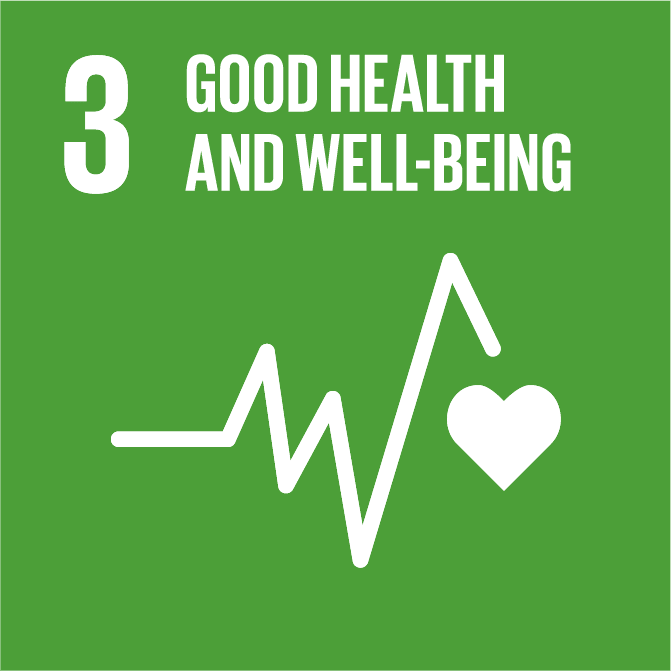
Health and Well-being
Target 3.7: By 2030, ensure universal access to sexual and reproductive health-care services, including for family planning, information and education, and the integration of reproductive health into national strategies and programmes
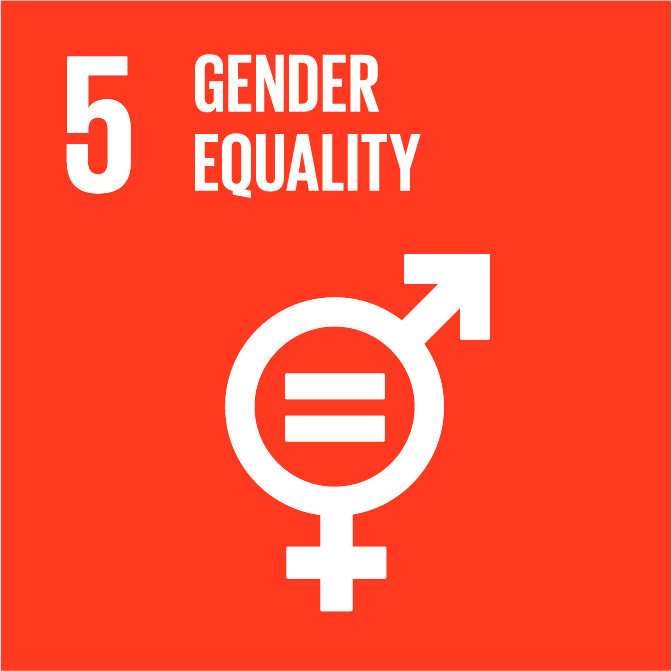
Gender Equality
Target 5.6: Number of countries with laws and regulations that guarantee women aged 15-49 years access to sexual and reproductive health care, information and education
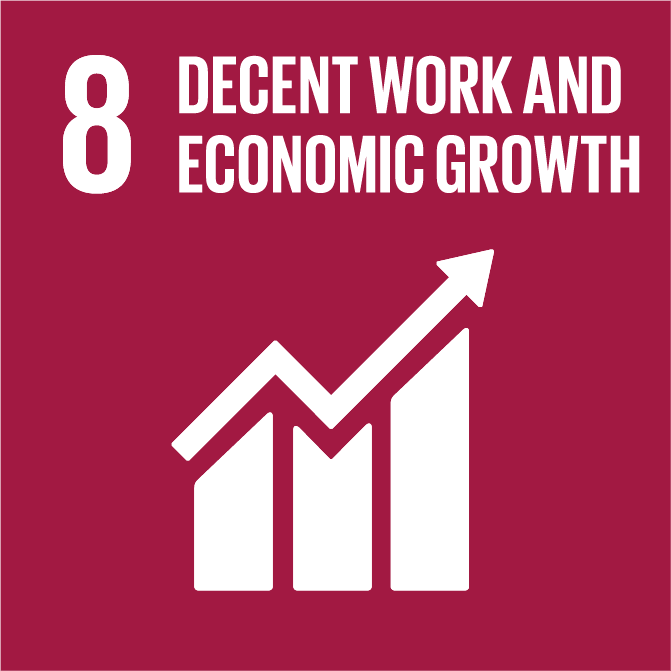
Decent Work and Economic Growth
Target 8.6: By 2020 substantially reduce the proportion of youth not in employment, education or training
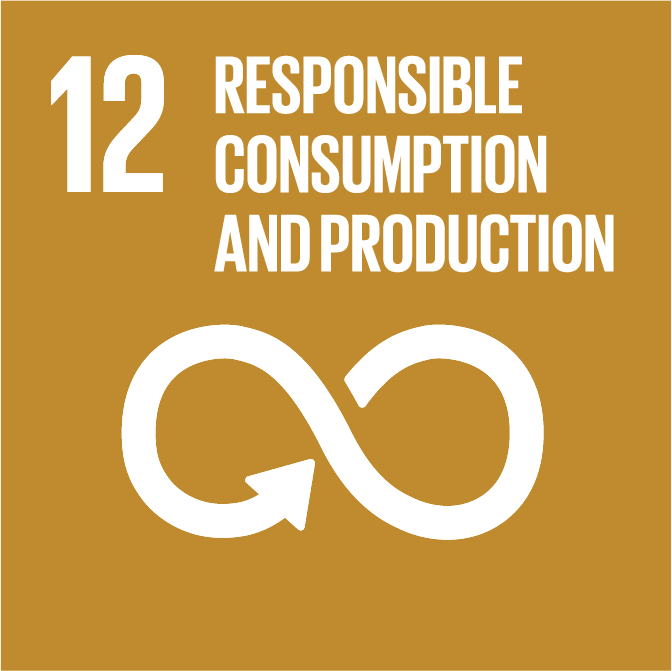
Responsible Consumption & Production
Target 12.8: By 2030 ensure that people everywhere have the relevant information and awareness for sustainable development and lifestyles in harmony with nature
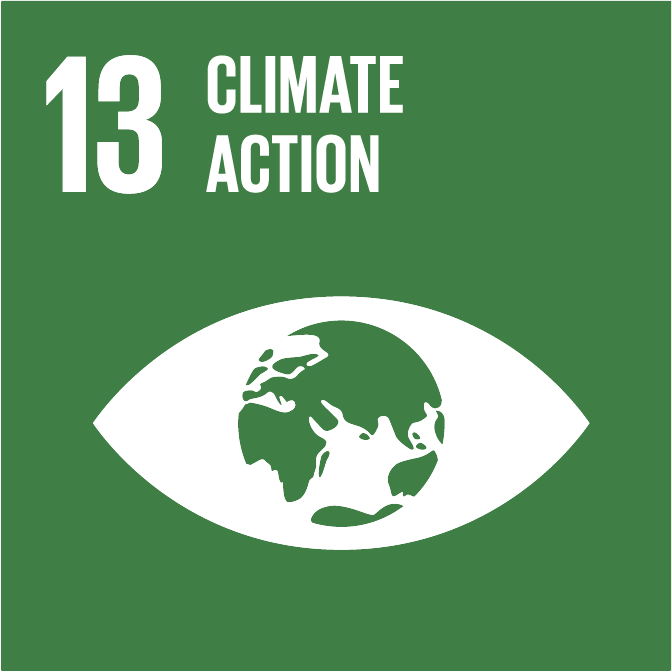
Climate Change Mitigation
Target 13.3: Improve education, awareness raising and human and institutional capacity on climate change mitigation, adaptation, impact reduction, and early warning
-
What are the key features of SDG4-Education 2030?
- A universal agenda for all countries: The 2030 Agenda for Sustainable Development is framed by two main objectives: poverty eradication and sustainable development. The concern for sustainable development and its three dimensions – economic, social and environmental - is at the heart of the 2030 global development agenda. This globally shared concern for sustainability implies a universal agenda relevant to all societies both in the global North and the global South. This can be understood as a universality of principles (human rights), universality of reach (focus on equity and inclusion), and universality of country coverage.
- A broad scope ensuring lifelong learning opportunities for all: SDG4-Education 2030 aims to ensure equitable opportunities to education in a holistic and lifelong learning perspective. It aims to ensure basic education leading to effective and relevant learning outcomes for all children, youth and adults as a foundation for lifelong and life wide-learning. In addition, SDG 4 also aims to ensure equal opportunity in access to post-basic learning opportunities for youth and adults throughout life.
- Renewed focus on equity, inclusion and gender equality: SDG4–Education 2030 includes a renewed focus on inclusion, equity and gender equality. This is particularly explicit in target 4.5 which aims to eliminate gender disparities and ensure more equitable access to all levels of education and vocational training for vulnerable populations.
2. SDG 4 Implementation/ National Adaptation
-
Can SDG4 commitments be “adapted” at national level?
SDG4 targets express a global commitment for all countries to ensure the right to quality education for all throughout life. This includes commitments to ensure both access to quality basic education for all, as well as equal opportunity in access to effective quality post-basic education and training. Across all targets is a central concern for ensuring equal opportunity in access to effective and relevant learning.
These commitments are articulated either as global targets and/or as global signposts:
- Global Targets: A number of SDG4 targets express the renewed global commitment to universalize access to quality basic education for all and gender parity by 2030. These global targets reflect most clearly the ‘unfinished EFA agenda’.
- Target 4.1 - Ensuring that all children and youth have access to a full cycle of 12 years of quality primary/secondary education, of which a minimum of 9 years are to be compulsory, public, and free.
- Target 4.2 - Ensuring that all children have access to at least one year of pre-primary education for all children.
- Target 4.5 – Ensuring gender parity at all levels of education.
- Target 4.6 - Ensuring that all youth [15-24 years of age] have adequate literacy and numeracy skills.
Despite different baselines that exist in each context, the common global commitment for all countries remains the same – to universalize access to quality basic education for all children and youth and ensure gender parity in education by 2030.
- Global ‘Signposts’: Other SDG4 targets do not articulate a global (quantitative) target for all countries to reach. Rather than quantitative targets, they serve as global signposts. These signposts express global commitments that need to be contextualized and reflected in national education policy priorities. As global signposts for national educational development, these targets require the setting of quantifiable targets at national level.
- Target 4.3 – Ensuring expanded and equitable access to all forms of post-basic education and training
- Target 4.4 – Ensuring relevant skills for the world of work
- Target 4.7 – Ensuring relevant learning for citizenship in a global world
- Target 4.a – Ensuring safe and inclusive learning environments
- Target 4.c – Ensuring adequate teacher recruitment, training and professional development, and working conditions
National benchmarks: Whether expressed as global targets or as global signposts, national governments are expected to integrate these global SDG4 commitments into national education development efforts. In all cases, appropriate intermediate national/local benchmarks will need to be established. Intermediate benchmarks for each target can serve as quantitative goalposts for review of overall progress vis-à-vis the longer-term goals. Intermediate benchmarks at national level are indispensable for addressing the accountability deficit associated with longer-term targets.
- Global Targets: A number of SDG4 targets express the renewed global commitment to universalize access to quality basic education for all and gender parity by 2030. These global targets reflect most clearly the ‘unfinished EFA agenda’.
-
What are the policy implications for educational development?
Key Features and Policy Priorities Implications for Educational Development Universally-relevant agenda with sustainability at its core Collaboration, cooperation and partnerships: As a universally-relevant agenda, SDG 4 – Education 2030 is a collective commitment of all countries regardless of their level of development. This has implications for patterns of cooperation, partnerships, and coordination among stakeholders within and across countries.
Inter-sectoral coordination at country level: The inter-linkages between and among SDGs require going beyond a ‘silo approach’ to education. Any strategies that aim to realize SDG 4, and ultimately all SDGs, should be based on an inter-sectoral coordination mechanism that is linked to the wider SDG coordination.
Expanded access to all levels of education in a holistic and lifelong learning approach based on the principles of education as a basic human right and as a public good Legislation: The commitments (1) to universal youth literacy, at least one-year of pre-primary education, 12 years of public and free primary and secondary education (of which at least nine years are compulsory), and (2) to ensure equal opportunity in access to post-basic education and training may require adjustment/strengthening of national legislation.
Sector-wide policy, planning and coordination: The fact that SDG4-Education 2030 concerns all levels of formal and non-formal education, as well as learners of all age groups, requires a truly sector-wide approach to education policy, planning, and coordination.
Recognition, validation and accreditation of learning: A lifelong learning approach requires a system of recognition, validation and accreditation (RVA) of learning and competencies acquired outside formal education and training institutions. RVA is essential for the establishment and facilitation of pathways between formal and less formal learning opportunities, as well as between education, training and work.
Financing: The ambition of the SDG4-Education 2030 agenda to expand access to learning opportunities for all throughout life places greater pressure on public funding of education. There is a need to ensure more efficient and equitable use of scarce resources and to promote greater accountability in the use of public resources for education. There is also a need to increase public education budgets through greater fiscal capacity, innovative partnerships with non-state actors, and advocacy for increased official development assistance.
Renewed focus on equity, inclusion and gender equity Inclusive policy dialogue and formulation: A focus on equity implies inclusive policy dialogue that allows for diverse constituencies to have greater voice in decision-making processes and ensure the legitimacy of national education policy choices.
Targeted strategies: Ensuring equity, inclusion and gender equality will require well-designed strategies for targeting the groups that are most vulnerable and disadvantaged in terms of access to quality learning opportunities.
Monitoring: Monitoring progress towards SDG4–Education 2030 commitments from an equity lens will require having access to more reliable and disaggregated data. It will also require strengthened capacity to analyse data on participation and learning outcomes at all levels.
Renewed focus on effective learning Curriculum and teacher training: Focus on effective and relevant learning may require review of existing curricula frameworks; teaching and learning contents, pedagogy, materials and classroom teaching practice; assessment frameworks; as well as teacher training and professional development. A holistic and coherent curricular approach will require alignment between curriculum content, assessment, teacher training, as well as school leadership and management.
New focus on relevance of learning both for the world of work and civic life Assessment of learning outcomes: Focus on effective and relevant learning requires fairer and more balanced mechanisms for measuring and validating knowledge, skills and competencies across a broader spectrum of users and of competences and thus greater flexibility in assessment practice.
Quality assurance and qualification frameworks: Focus on the effective acquisition of competencies and the relevance of learning for the world of work and civic life requires the establishment or the strengthening of national quality assurance and qualification frameworks.
-
What does it mean to ‘implement’ SDG4?
A range of terms are often used interchangeably when it comes to the ‘implementation’ of SDG4. These include ‘mainstreaming’, ’streamlining’, ‘translating’ and ‘integrating’ SDG4 goal and targets into national education sector policies and plans, as well as ‘aligning’ and ‘adapting’ education sector policies and plans with SDG4. Whatever the terms used, it is important to highlight that because of its sector-wide scope, SDG4 cannot be implemented as something different and separate from national education sector development efforts.
‘Implementing’ SDG4 at country level implies an effort to align/adapt national education policy and planning to global targets and policy priorities reflected in the 2030 agenda. The degree of alignment of national policies and plans to SDG4 will depend on countries’ policy priorities, political commitment, planning cycles, institutional arrangements, as well as human, technical, and financial capacity.
-
Are national SDG4 plans necessary?
SDG4 targets and policy priorities should be part of existing national education policies, plans and processes. Efforts to realize SDG4 commitments should not result in parallel or separate plans or processes. SDG4 policy commitments do not exist outside of existing national policies, planning, management and monitoring processes and mechanisms. Rather, existing country-led systems, processes and mechanisms should be supported or strengthened to ensure better alignment/adaptation with global commitments.
-
What is the 2030 Framework for Action?
The Education 2030 Framework for Action provides guidance for the implementation of SDG4 at country, regional and global levels. The first part outlines the vision and principles on which SDG4 is based. Part 2 then presents the overarching goal and each of the seven outcome targets and the three means of implementation, providing rationales for each and proposing indicative strategies. Finally, Part 3 of the Framework for Action outlines issues relative to implementation modalities, including: Governance, accountability and partnerships; Coordination; Monitoring and Review, and Financing. It also includes the framework of global and thematic indicators proposed for the monitoring of progress towards SDG4 commitments. These frameworks can also be found in Annexes 3 and 4 of the present guide.
-
What are the steps involved in translating global commitments at country level?
Building a shared understanding at country level: Building a shared understanding of the 2030 agenda among all stakeholders is a necessary precondition in order to translate global SDG4 commitments into national education development efforts. This involves inclusive consultations around the new agenda. The participatory process of building this shared understanding is key to ensuring buy-in from all stakeholders involved in the development of the national education system.
Assessing country readiness: Based on this, it is then necessary to assess country readiness for the translation of SDG4 commitments into national education systems. This includes assessing the policy, planning, monitoring, and management contexts of national education systems in order to identify the existing gaps with SDG4 commitments and ambitions, as well as the actions required to strengthen, adjust and/or adapt policy and planning frameworks and processes to reflect 2030 commitments.
- Policy context: Assessment of the national legislative and policy context against global 2030 policy commitments. This implies an examination of legislative and policy frameworks and an identification potential gaps that may exist between the national policy context and global commitments.
- Planning context: Identification of entry-points that would allow for the integration of 2030 commitments into the national planning context. Depending on specific national policy/planning cycles, this could be done either through the development of a sector-wide, or sub-sector plan(s), or by realigning existing plans to better reflect SDG4 commitments.
- Monitoring and evaluation: This involves an examination of existing national monitoring and evaluation frameworks to better reflect the requirements of the global indicator framework proposed for the monitoring of SDG4 progress.
- Management context: This implies strengthening and/or adapting existing sector coordination mechanisms, to better reflect the system-wide, inclusiveness and transparency requirements of the Education 2030 ambitions. Partner dialogue can also ensure coordinated agreement on the capacity development requirement of translating the SDG4 commitments into national development efforts.
All efforts undertaken to translate global Education 2030 commitments at country level must be country-led and country-owned. They must be embedded in national education planning processes and structures. These efforts do imply the establishment of separate national SDG4 plans or processes.
-
What are the roles and responsibilities of partners?
Translating SDG4 commitments into national education development efforts involves the engagement of, and coordination among, a wide range of partners at all levels. Whether at the global, regional or national level, strong multi-stakeholder partnerships linked to broader SDG processes are essential for successful translation of 2030 commitments into national education development efforts.
Principles for mutual accountability: The principles of (i) country ownership, (ii) focus on results, (iii) transparency, and (iv) shared responsibility, apply to all partners at all levels, as well as to all stages of policy, planning and implementation cycles. Partners are all expected to adhere to these principles in working together to provide support to countries. The principles are key to ensuring mutual accountability in the pursuit of shared SDG4 commitments.
Coordination of partnerships: Achieving the aspirations of the education goal and targets in the 2030 Agenda for Sustainable Development requires coordinated efforts at all levels among all partners involved. In supporting government efforts to ensure quality inclusive education and lifelong learning opportunities for all, partners are expected to clearly define their respective commitments and the nature of their support based on their own comparative advantage. Given the diversity of both development partners and the support they may provide, coordination is key at country, regional and global levels.
Coordinating partnerships at country level: At country level, coordination may be ensured through a variety of partnerships mechanisms. The nature and dynamics of existing education sector coordination mechanisms vary across very diverse country settings. SDG4 commitments may require the strengthening and/or adaption of existing mechanisms to ensure they are truly sector-wide, inclusive and country-led.
SDG–Education 2030 Steering Committee: At the international level, the SDG–Education 2030 Steering Committee, convened by UNESCO, constitutes the global multi-stakeholder governance mechanism for SDG4. The primary objective of the Steering Committee is to provide strategic guidance, to review progress against the Global Education Monitoring Report, to make recommendations to the education community on key priorities and actions to achieve the new agenda, to monitor and advocate for adequate financing, and to encourage coordination of partner activities. The Steering Committee is composed of 34 members representing a majority from Member States, as well as Education 2030 co-convening agencies (UNESCO, UNDP, UNFPA, UNHCR, UNICEF, UN Women, the World Bank, ILO), OECD, GPE, regional organizations, teacher organizations, and civil society networks.
Regional multi-stakeholder partner groups: Regional coordination is essential to support national efforts and to ensure harmonization between efforts at the global and country levels. Regional coordination mechanisms should build on and be in line with existing mechanisms and structures to the extent possible, including with the broader UN coordination mechanisms for monitoring and reporting established for follow up and reporting on the overall SDG framework. Composition of regional Education 2030 coordination mechanisms include representatives of Education 2030 co-convening agencies, regional organizations, regional CSO networks, as well as other regional or international partners that may be involved in supporting educational development in countries within the region.
The regional level is key both to informing the global Steering Committee about regional realities and national priorities, as well as to translating global guidance provided by the global Steering Committee into country-level action. In order to ensure optimal articulation between the global Steering Committee and country realities, the composition of the regional coordination mechanism at (sub)regional level should include the global Steering Committee members who represent the region.
3. SDG 4 - Monitoring
-
How will progress be monitored?
As the primary responsibility for monitoring lies at the national level, countries should establish effective monitoring and accountability mechanisms which are adapted to national contexts and priorities, in consultation with all stakeholders. At the global level, the UNESCO Institute for Statistics (UIS) remains the official source of cross-nationally comparable data on education and supports countries to strengthen national education data systems. The Global Education Monitoring (GEM) report is the global mechanism for monitoring and reporting on SDG4 and on education in the other SDGs. It also reports on the implementation of national, regional and international strategies to help hold all relevant partners to account for their commitments as part of the overall SDG follow-up and review.
The 2016 GEM Report, which was launched on 6 September, 2016, is the first of a new 15-year series. It shows that education will not deliver its full potential to catapult the world forward unless participation rates dramatically improve, learning becomes a lifelong pursuit and education systems fully embrace sustainable development. The Monitoring part of the GEM Report discusses the complex links between SDG 4 on education and the other 16 SDGs. The thematic part presents compelling arguments as to the types of education and learning that are vital for achieving other SDGs.
-
What indicator framework is proposed to monitor progress?
At the international level, there are 11 global indicators proposed for monitoring SDG 4. These 11 global indicators represent the minimum set of indicators proposed to countries for the global monitoring of the SDG 4 targets. A broader set of internationally-comparable indicators are also being developed. This set of 43 thematic indicators serve to chart global progress on education and to monitor the SDG4 education targets more comprehensively across countries, allowing the possibility to identify conceptual challenges regarding the targets that are not adequately addressed and reflected by the global indicators. The thematic indicator framework includes the global indicators as a subset and also proposes a set of additional indicators that countries may use to monitor their progress. The selection of which additional indicators to be used in each national context will depend on policy priorities, technical capacity, and data availability.
Additional regional indicators may be developed to take account of specific regional contexts and relevant policy priorities for concepts that are less amenable to global comparison. At the national level, countries will also have additional indicators that account for specificities of their national contexts and that correspond to their education systems, policy agendas, strategies and plans.
4. SDG 4 - Financing
-
What are the implications for domestic financing?
Financing the translation of SDG4 commitments into national education development efforts will not only require higher levels of sustained funding, but also more efficient and equitable use of these funds. As outlined in the Education 2030 Framework for Action (para 106), domestic resources remain the most important source for funding education. There must therefore be a clear commitment by governments to provide equitable financing commensurate with national educational priorities, needs, and capacities to advance the progressive realization of the right to education. In order to increase and improve domestic financing for education, countries will need to:
Increase public funding for education: This requires widening the tax base, preventing tax evasion and increasing the share of the national budget allocated to education. International benchmarks recommend allocating at least 15-20% of public expenditure and at least 4-6 % of GDP to education.
Increase efficiency and accountability: While domestic funding for education needs to be increased, existing resources need to be used more efficiently. Improving governance and accountability can increase efficiency and effective use of existing resources.
Prioritize those most in need: Finally, education resources allocated to education should be used in a more equitable manner. Disadvantaged children, youth and adults, as well as women and girls and people in conflict-affected areas, typically have the greatest education needs and financing should therefore be targeted towards them.
-
What are the implications for Official Development Assistance?
As outlined in the Education 2030 Framework for Action (para 107), shortage of funds should not jeopardize the right of billions of learners entitled to relevant educational opportunities. The annual financing gap between available domestic resources and the funding necessary to meet the 2030 commitments in low and lower middle income countries is even more important than it was with the Education for All agenda. The gap is particularly large in low income countries, where it constitutes 42% of annual total costs. An important use of international public finance, including Official Development Assistance (ODA), is to catalyse additional resource mobilization from other sources, public and private. Aid will thus remain a crucial source of education finance if the 2030 commitments are to be met. External financing of education needs to be increased and improved. In order to do so, education partners therefore need to:
Reverse the decline in aid to education: The fall in aid to education in recent years must be reversed. The fulfilment of all commitments related to ODA is crucial, including the commitment by many developed countries to achieve the target of 0.7% of gross national income (GNI) for ODA to developing countries and 0.15% to 0.2% of GNI to least developed countries. Moreover, support to least developed countries for education has to be increased with predictable patterns of aid to education.
Improve aid effectiveness through harmonization and better coordination: Donors, middle income countries and other partners should support the financing of Education 2030 commitments according to each country’s needs and priorities, seeking to leverage domestic and external finance in support of the common agenda. Donors should ensure that aid is better harmonized and coordinated and that it strengthens country ownership and accountability to its citizens.
Improve the equity of external financing: While declining ODA flows need to reversed, external financing should also be better targeted at supporting neglected subsectors and low income countries, and vulnerable and disadvantaged groups in middle income countries. Multi and bilateral donors for education should develop strategies in cooperation with recipient countries to jointly define what kind of support should be best provided and through which channels and modalities of delivery.
Promote South-South and triangular cooperation: South-South cooperation is an important means of supplementing international cooperation for development. South-South cooperation should be seen as an expression of solidarity among peoples and countries of the South, based on their shared experiences and objectives. Triangular cooperation should be strengthened as a means of financing education and bringing relevant experience and expertise to bear in development cooperation. Moreover, the establishment of the BRICS Development Bank by Brazil, China, India, the Russian Federation and South Africa may offer new sources of funding for education and help reverse aid declines.
Increase aid flows to education in conflict and crisis: It will be impossible to deliver education to all without successfully reaching children, youth and adults in fragile states and those affected by conflict and natural hazard. The 2030 Framework for Action calls for urgent efforts to significantly increase support for education in humanitarian responses and protracted crises. Creating synergies between humanitarian and development financing can increase the effectiveness of investments in recovery efforts in fragile and conflict-affected states.
-
What international mechanisms exist to improve financing of Education 2030?
The Financing for Development Process: The Addis Ababa Action Agenda adopted at the Third International Conference on Financing for Development (Addis Abba, 13-16 July 2015) provides a new global framework for financing sustainable development. It encourages countries to consider setting nationally appropriate spending targets for quality investments in essential public services for all, including education (§12). Countries agreed to scale up investments and international cooperation to allow all children to complete free, equitable, inclusive and quality early childhood, primary and secondary education (§78). Likewise, it was agreed to scale up investment in science, technology, engineering and mathematics (STEM) education, and enhance technical, vocational and tertiary education and training, ensuring equal access for women and girls; as well as to enhance cooperation to strengthen tertiary education systems, and aim to increase access to online education (§119). The follow-up of the Financing for Development process is ensured through regular ECOSOC fora on Financing for Development. A UN Interagency Task Force on Financing for Development has also been set up.
The International Commission on Financing Global Education Opportunity is a major new global initiative engaging world leaders, policy makers and researchers to develop a renewed and compelling investment case and financing pathway for achieving equal educational opportunity for children and young people. The Commission brings together the best research and policy analysis on the actions necessary to increase investment in concrete, relevant learning outcomes that have a positive impact on economic and social development. While the entire education system will be considered starting in the early years, the Commission will pay particular attention to the provision of basic education and its role in improving life chances and generating equal opportunities for young people to access further education, enter the workforce and engage in society. The Commission aims to secure increased, more effective investments and contribute to the mobilization of new partnerships to achieve these aims, particularly in middle-income and low-income countries. The Commission will issue its report, including recommendations, to the UN Secretary-General on 18th September 2016.

